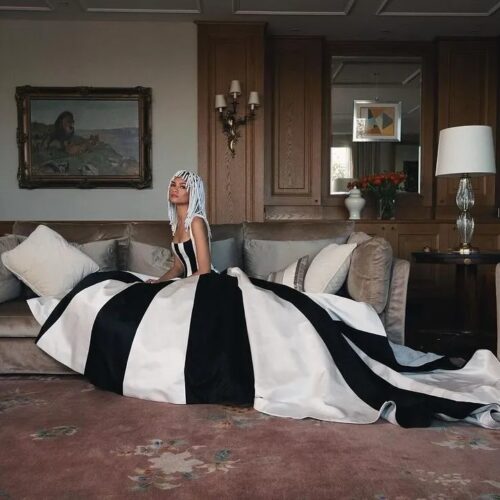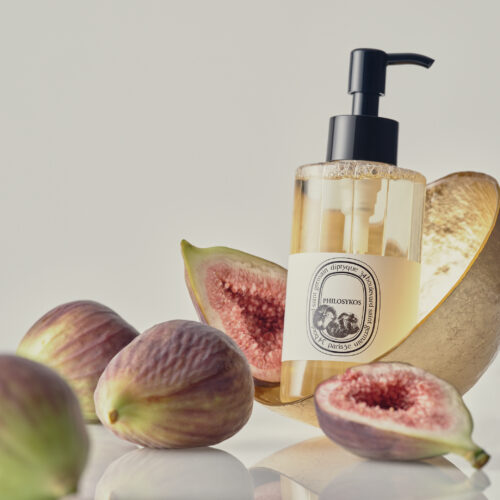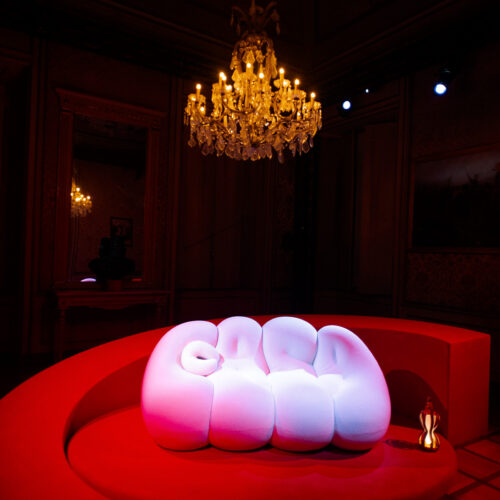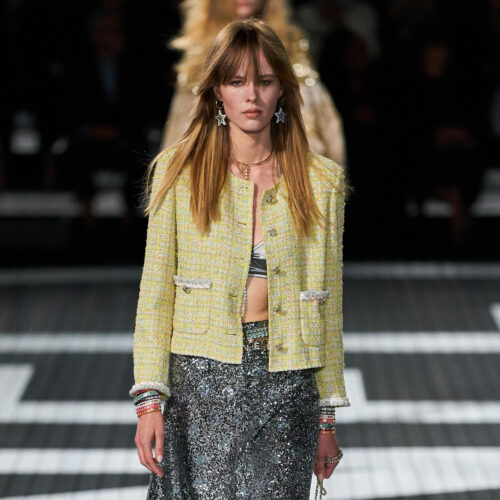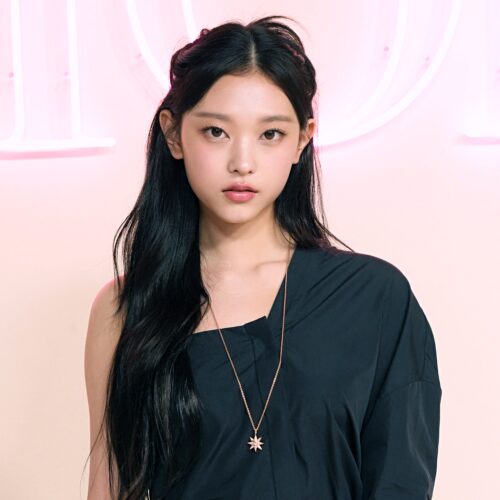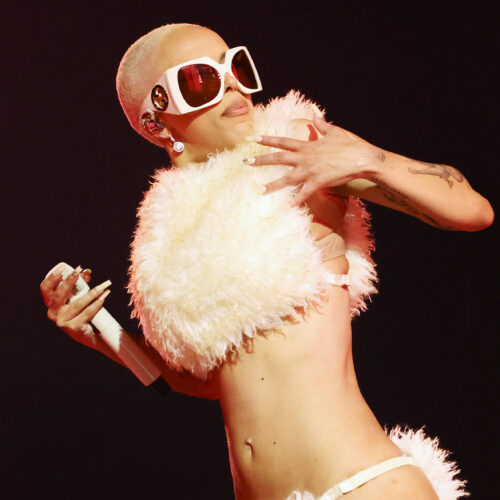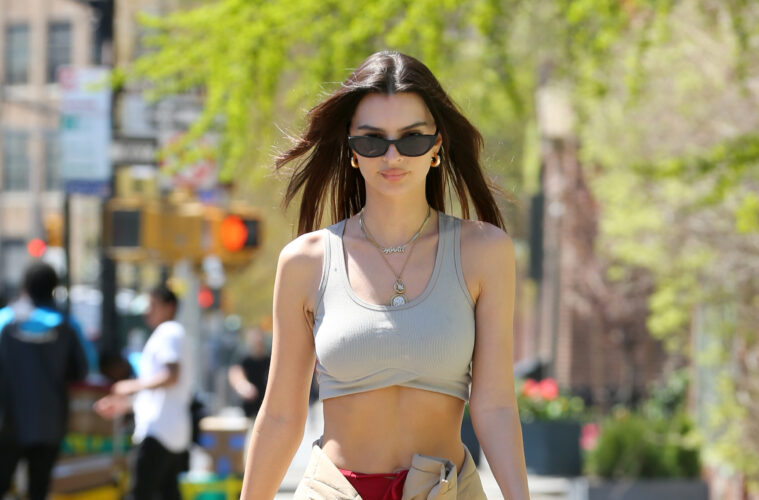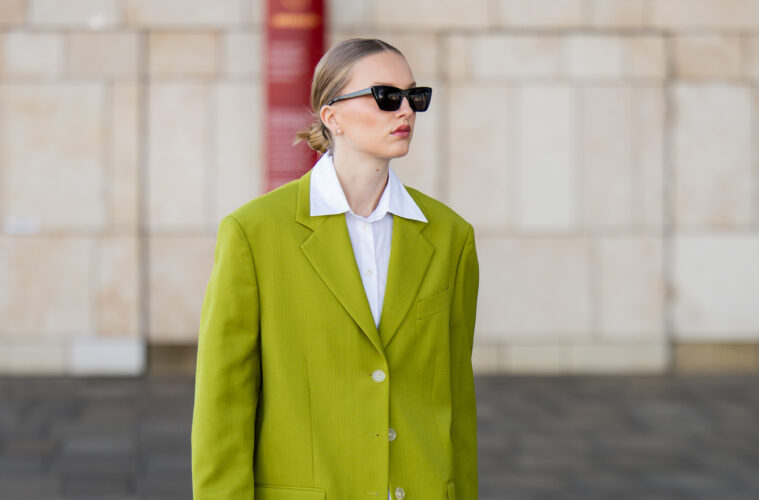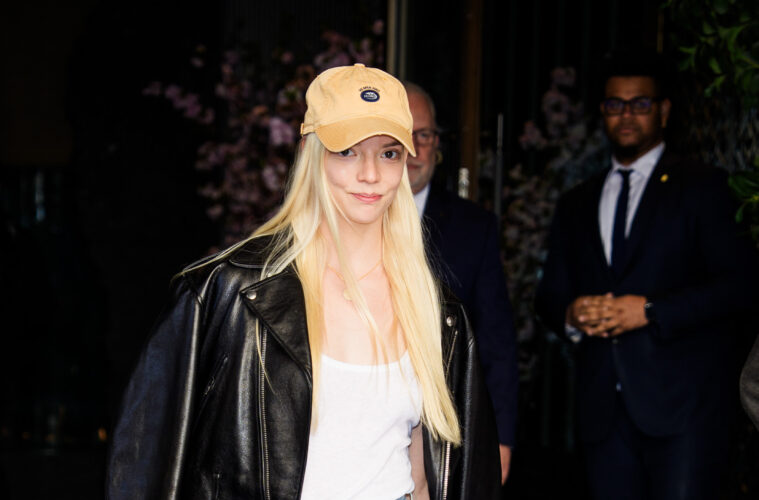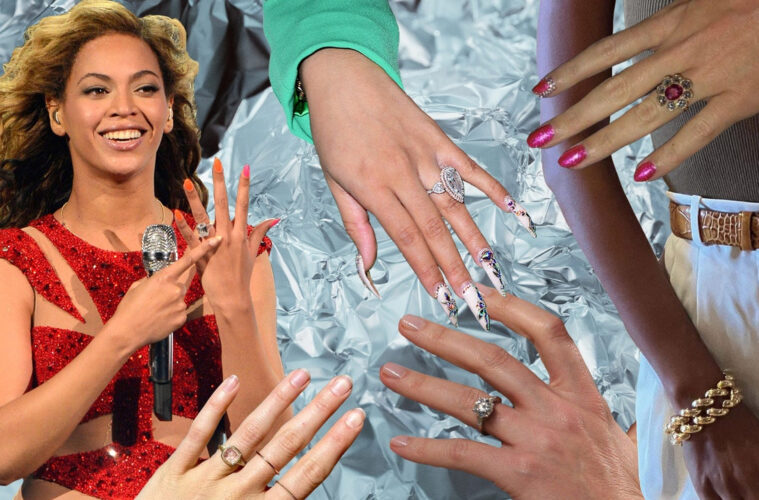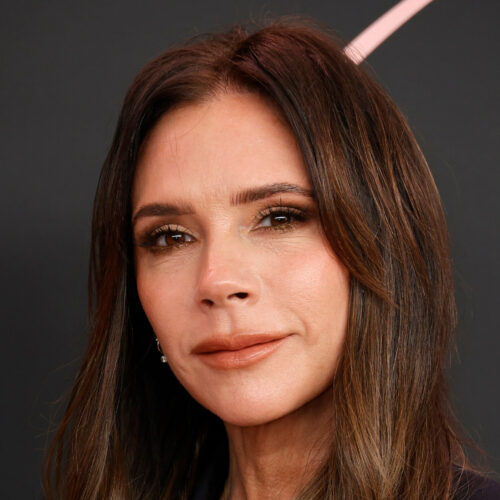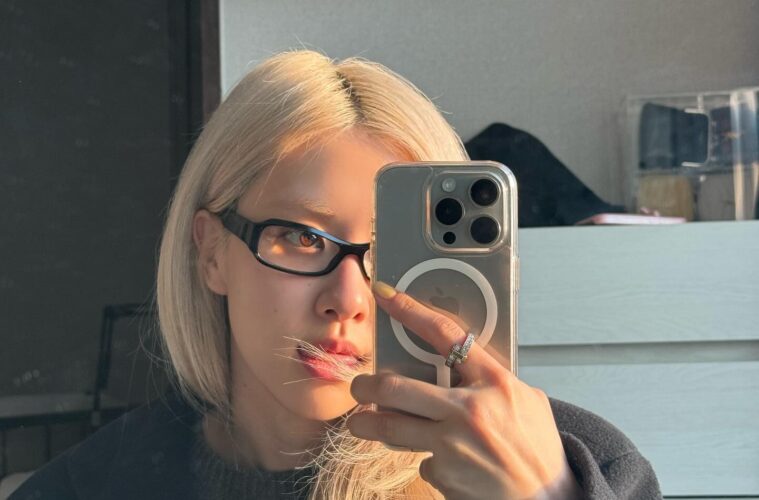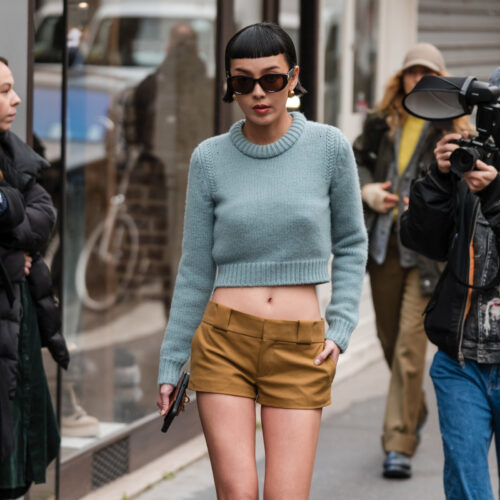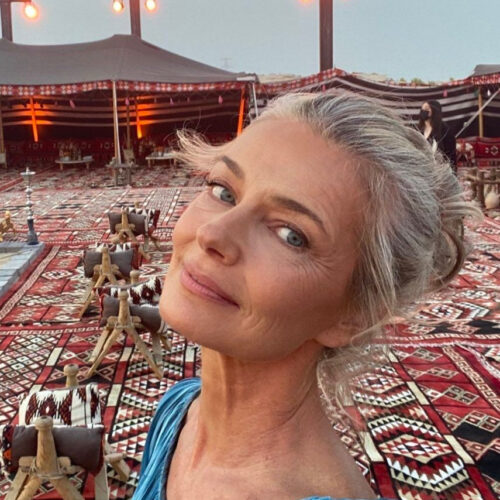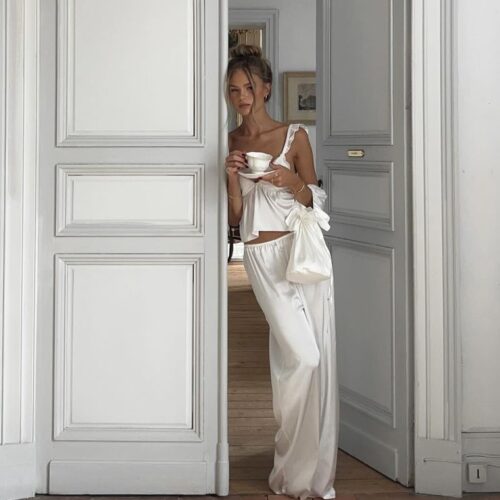카메라 렌즈를 통해 평가 받는 당대 유럽 공주들과 왕자비들의 스트레스
‘보그 인터내셔널 에디터’ 수지 멘키스는 세계에서 가장 유명한 패션 저널리스트다.
<인터내셔널 헤럴드 트리뷴>(현재 <인터내셔널 뉴욕 타임즈>로 이름이 교체됐다)에서 25년 간 패션 비평을
담당한 그녀는 현재 세계 각국의 ‘보그닷컴’을 위해 독점 취재 및 기사를 쓴다.
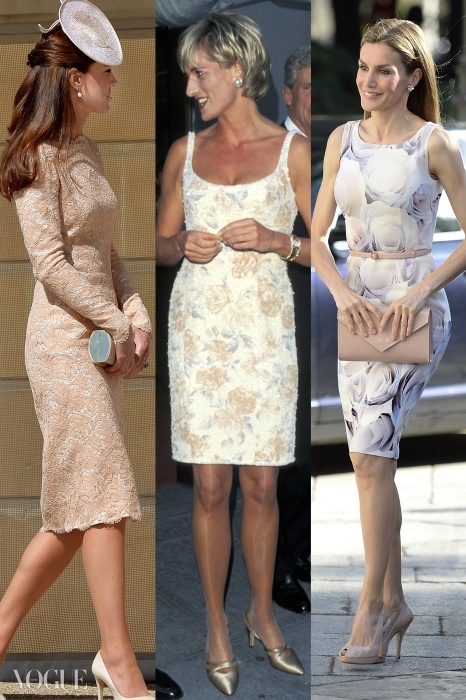
유럽 왕실의 왕자비들은 이미지에 집착한다.
나는 성직자 같은 하얀 옷을 입고 천사 같은 딸들 옆에 앉아 있는 스페인의 새로운 왕비 레티치아의 사진을 가만히 바라봤다. 그 순간 눈물이 나올 것 같았다. 이런 감정은 펠리페 6세의 즉위식을 보고 있어서가 아니었다. 그의 아내 옷을 누가 디자인했는지 궁금한 것도 아니었다. 특히 그것은 아니었다.
그 사진을 보며 나는 당대 모든 유럽 왕자비들에게 느끼는 것과 똑같은 유감스러운 기분을 느꼈다. 그들은 똑똑하고 지적이며 귀족 혈통 때문이 아닌, 사랑 때문에 선택 받았지만 결국 옷걸이로 비춰지고 있다.
그들이 지난 10년 동안 관여한 이슈들과 대의명분 보다 그들의 옷, 몸매, 코 수술과 그 밖의 사소한 것들에 대한 얘기들이 더 많이 들린다.
나는 그게 다이애나 때문이라고 생각한다. 그녀의 잘못이 아니라 그녀의 유산 때문이긴 하지만. 이 웨일즈의 왕세자비는 에이즈 치료를 위한 캠페인을 비롯해 지뢰 제거와 백혈병에 걸린 아이들을 돕는 일 등 좋은 일을 아주 많이 했다. 그러나 자신의 행동보다 카리스마 넘치는 페르소나, 특히 외모와 옷 입는 방식으로 평가됐다.

귀족인데다 교육을 제대로 받지 못했고 사랑과 지지에 굶주렸던 다이애나는 자신의 옷을 게시판처럼 이용할 정도로 영리했다. ‘부끄러움 많은 다이애나’에서 젊은 엄마, 멸시당한 아내, 자신감 넘치는 이혼녀, 그리고 궁극적으로 슈퍼스타로의 변신은 의도된 것이었다.
그러나 살아있었으면 올해 7월 1일에 53세의 할머니가 됐을 배려심 많고 헌신적인 왕세자비의 끔찍한 유산은 다음 세대 왕자비들을 거울 쪽으로 유혹해왔다. 그들은 TV 화면과 신문 사진의 유혹에 넘어가 다이애나가 너무 성공적으로 이용해온 외모에 집중했다. 그들의 목표인 새로운 레이디 다이애나가 되는 건 불가능한 일이 됐다.
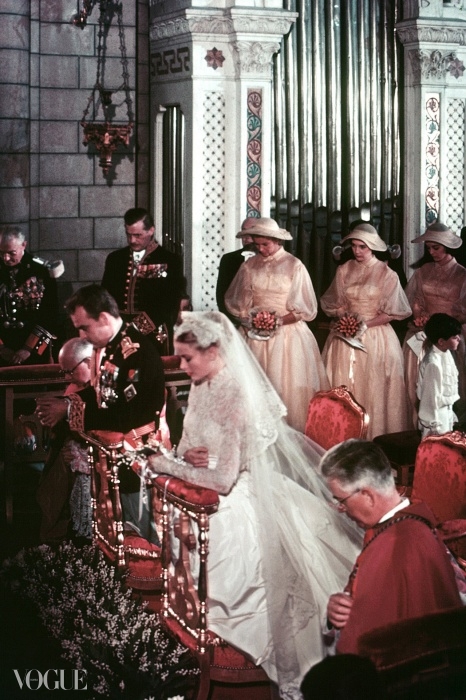
나는 비평가들이 혹평한 영화 <그레이스 오브 모나코>를 봤다. 그리고 영화 스타로서의 왕세자비라는 개념이 실제 사건에서 비롯됐다는 것을 깨달았다. 즉 1956년 거행된 그레이스 켈리와 모나코의 레이니에의 결혼식 말이다. 당시 왕권을 보여준 방식은 할리우드식 환상이었다. 그녀 시대의 스타일 기준을 결정했던 실크, 다이아몬드, 올린 머리 같은 것들 말이다.
오늘날 이미지는 스마트폰 렌즈를 통해 보여진다. 왕비로서 자신의 첫 공식 업무를 수행하기 위해 마드리드의 프라도 박물관을 방문한 레티치아는 너무 날씬해 보였다. 그러나 요르단의 라니아 왕비와 마찬가지로 실제로 보면 TV에 적합한 몸매로 살을 뺀 작은 새 같다.
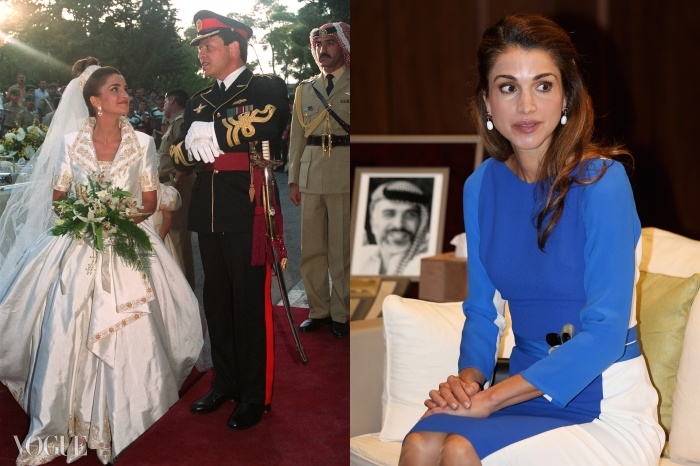
그들의 현재 사진들을 왕실 결혼식 앨범과 비교해 보면 모든 게 변한 듯하다. 체형, 광대뼈, 코. 그것은 가혹한 카메라 렌즈를 위해 자신을 리모델링한 이제 막 40세가 된 젊은 여성의 모습이다.
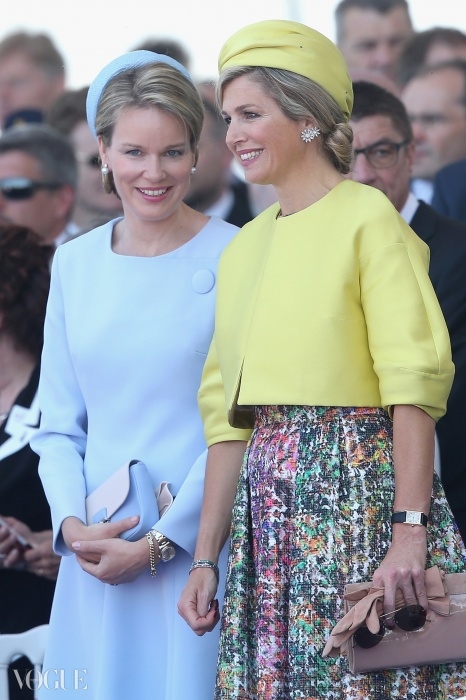
현재 모든 젊은 왕족들(덴마크의 메리, 노르웨이의 메테-마리트, 혹은 최근 왕관을 쓴 네덜란드의 왕비 막시마)은 날씬한 정도가 다르다. 통통한 왕실 인물들은 네덜란드의 왕비였던 뚱뚱한 베아트릭스(세상을 떠난 영국의 엘리자베스 여왕의 어머니와 비슷한 몸매의 소유자)처럼 퇴위한 세대에서만 볼 수 있다.
케이트 미들턴은 이런 새로운 유형의 일원이다. 그녀는 운동을 좋아하는 학생에서 날씬한 왕자비가 됐다. 1년 전 7월에 조지 왕자가 태어날 때 부푼 배를 보여준 이후 지금은 사진 속에서 너무 날씬해 보이지만 실제로 보면 쇠꼬챙이처럼 말랐다.
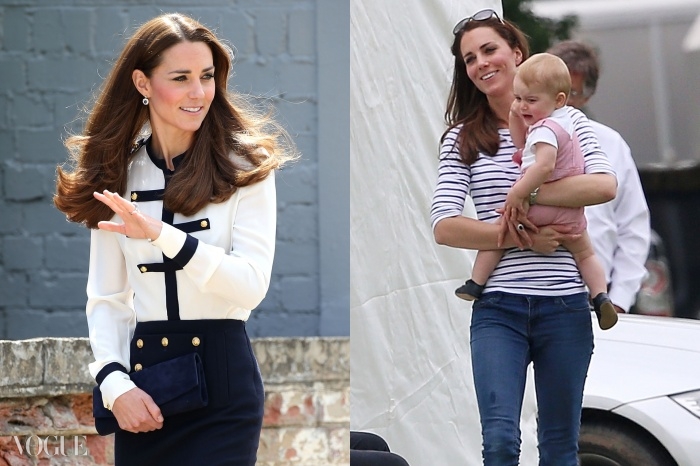
캠브리지 공작부인은 의상이라는 언어를 통해 페르소나를 창조하기 위해 좋은 머리를 사용하고 있다(윌리엄 왕자처럼 그녀도 스코틀랜드의 세인트 앤드류스 대학 졸업생이다). 그녀의 하이&로 드레싱(어느 날은 알렉산더 맥퀸의 꾸뛰르를 입었다가 다음 날은 자라 기성복을 입는 식)은 우리에게 메시지를 보낸다. ‘나는 왕족일지 모르지만 여전히 평범한 케이트예요’라는 메시지.
그들의 행위보다 옷에 초점을 맞추는 건 짹짹거리는 스마트폰 비평가들의 부추김을 받아 발 빠르게 비판에 동참하는 우리 패션 에디터들의 책임이다.
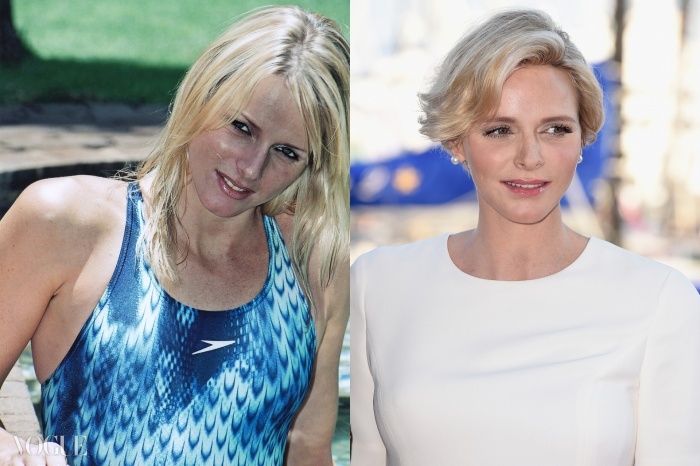
남아프리카의 수영 스타였던 모나코의 샤를렌을 비롯해 호주 태스매니아에서 태어난 덴마크의 메리, 그리고 귀족인 벨기에의 새 왕비 마틸데에 이르기까지 모든 왕세자비들이 지원하는 단체들이 있다는 것을 알고 있다. 하지만 그들의 활동보다 옷에 대해 언급하는 게 훨씬 쉽다.
예를 들어 레티치아는 다양한 자선 활동에 참여하고 있다. 희귀병 연구나 세계 보건 기구의 영양 프로그램 지원 등등. 모나코의 샤를렌은 아동 단체들과 수상 안전 자선활동을 지원 중이다. 덴마크의 메리는 덴마크 암 재단과 희귀병 연구를 후원한다.
아마 그들 나라에서는 이런 프로젝트들이 널리 알려져 있을 것이다. 그러나 세계적으로는 케이트가 메리의 여동생 같다는 칼 라거펠트의 코멘트 같은 것만 따라다닌다.
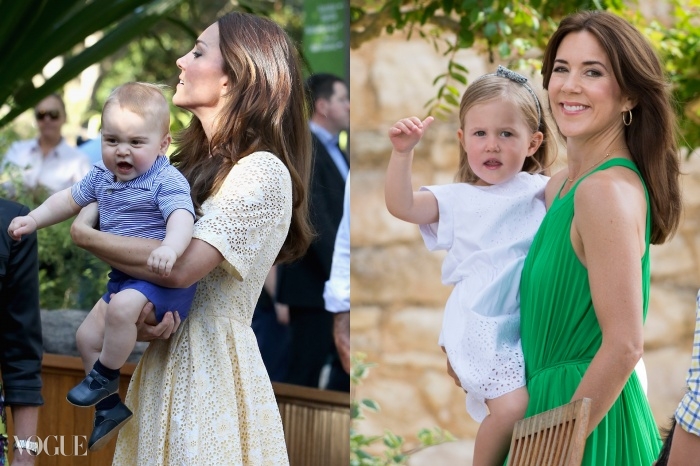
그 밖에 뉴스에 뭐가 등장할까? 모나코의 샤를렌과 알버트가 언제 아이를 낳을지에 대한 끝없는 질문들이 있었다. 그런 수다는 이제 샤를렌이 쌍둥이를 낳을 지로 바뀌었다.
아, 엄마 역할! 현대 군주제의 시대착오적인 부분은 여전히 아이를 낳는 것이 왕실에 시집온 왕자비의 운명이자 목적이라는 것(고대부터 그랬던 것처럼 말이다). 그녀는 왕실 계승을 보장해 주는 ‘후계자와 여분의 상속자’를 생산해야 한다.
그러나 셀피와 인스타그램의 세계에서는 그것만으로 충분하지 않다. 왕자비는 아이를 생산하고 나면 출산 후 예전의 몸매를 회복하기 위해 마술봉을 휘둘러야 한다고 느낀다. 할리우드 스타들처럼 말이다. 카메라를 위해 날씬함을 유지하는 건 강박증이 됐다.
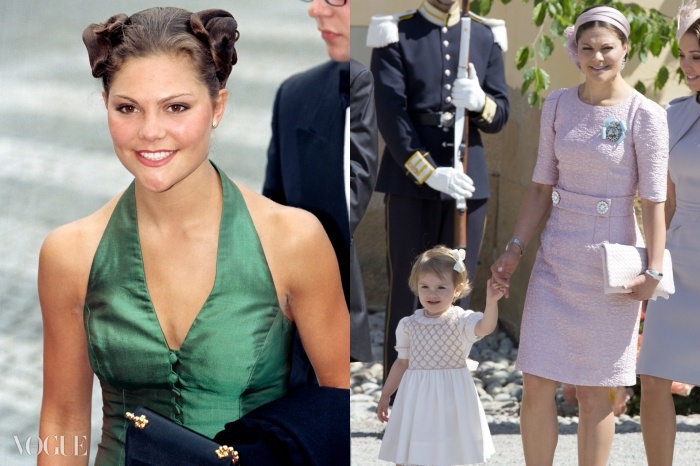
실제로 식이장애를 인정한 유일한 왕실 인물(다이애나와 그녀의 폭식증을 제외한)은 스웨덴의 왕위계승자인 빅토리아 공주다. 그녀는 1997년 거식증으로 고통 받았지만 지금은 건강한 젊은 엄마처럼 보인다. 중요한 건 그녀가 왕실에 시집온 여성이 아니라 왕위계승자라는 것이다.
소문에 의하면 레티치아도 거식증에 걸렸다고 한다. 그리고 현재 그녀의 새처럼 가벼운 모습은 2004년 결혼하기 전 영향력 있는 TV 사회자였던 레티치아 오르티츠 로카솔라노의 모습과 굉장히 다르다.
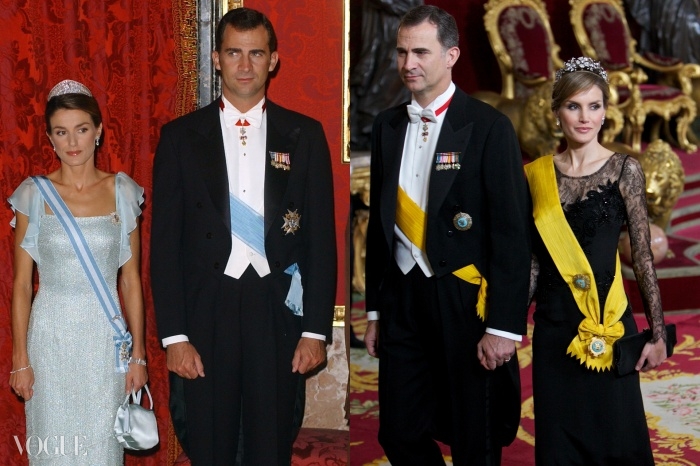
프랑스 왕실 및 사교계 잡지인 <푸엥 드 뷔(Point de Vue)>에서 10년간 편집장을 지냈던 콜롱브 프링글은 새 왕세자비들을 따라다니며 그 극적인 변화를 목격했다. 나는 그녀에게 왜 젊은 왕족들이 자신의 외모에 집착하게 되었는지 물었다.
“그들 모두 영화 스타가 되고 싶어 합니다. 그리고 그들은 사진이 실제 보다 더 뚱뚱하게 나올 수 있다는 걸 깨달았어요.” 현재 프랑스 TV 저널리스트로 활동 중인 콜롱브는 말한다.
프링글에 따르면 젊은 왕실 사람들은 스스로를 보다 폭넓은 사회변화의 일부라고 생각한다고 한다. “그들은 모두를 위한 첫 세대입니다. 잡지들이 오직 ‘잇’ 백에 대해서만 얘기하는 건 처음이지요. 깐느도 온통 레드 카펫 얘기뿐입니다. 그들은 다이아몬드 귀걸이를 한 옷걸이 같습니다.”
그 잡지를 전통적인 왕실 홍보보다 보다 지적이고 정치적인 것으로 만들었던 프링글은 카를라 브루니가 프랑스 영부인에서 불가리 보석을 위한 걸어 다니는 광고로 바뀌는 것을 목격했다. 콜롱브는 케이트 미들턴의 머리가 왕실 헤어스타일보다 헤드&숄더 샴푸 광고처럼 보인다고 말하기까지 했다.
그렇다면 왕실의 피를 이어받지 않은 이런 중산층 왕자비들의 미래는 어떻게 될까?
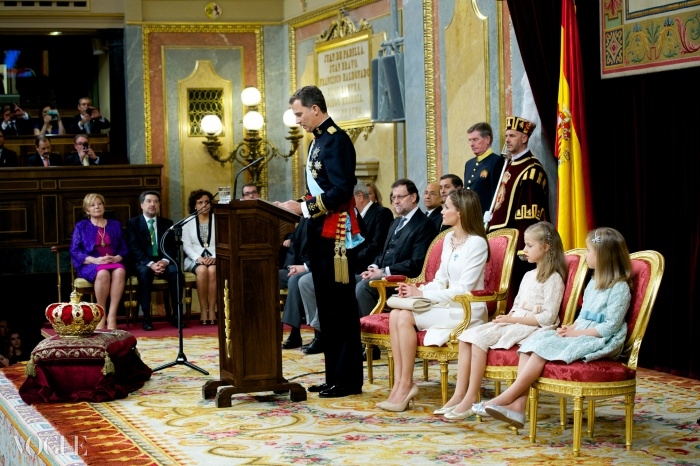
위대한 역사적인 변화는 이제 맨 처음 태어난 아이(여자든 남자든)가 왕위를 계승할 수 있다는 것이다. 왕위 계승에 있어 장자상속 규정이 바뀌었기 때문이다.
그리고 운 좋게도 조지 왕자를 제외하고 거의 모든 왕세자비들이 첫 아이로 딸을 출산했다. 그래서 현재 여덟 살인 스페인의 레오노르 공주는 언젠가 여왕이 될 것이다. 스웨덴의 에스텔레 공주, 왕세자비인 메테-마리트의 딸인 노르웨이의 잉그리드, 혹은 네덜란드의 막시마 왕비의 딸인 카타리나-아말리아(Catharina-Amalia)도 마찬가지다.
그렇다면 이 어린 소녀들은 자신이 하는 일(외모가 아닌)로 이름을 알리는 자신감 넘치는 공주와 여왕으로 성장할까?
이젠 그런 것이야 말로 진짜 왕실 동화가 될 것이다.

English Ver.
Diana’s disastrous legacy BY SUZY MENKES
Suzy Menkes discusses the pressure on today’s European princesses as they are judged through the camera lens
Europe’s royal princesses are fixated on image
I gazed at the photo of the new Spanish Queen Letizia, sitting in a priestly white outfit next to her angelic daughters. And I felt like weeping.
My emotion was not at seeing the inauguration of King Felipe Vl. Nor was I interested in who had designed his wife’s outfit. Especially not that.
But I felt the same chagrin that I do for all this generation of European princesses, who are smart, intelligent, chosen for love, not their blue blood – yet destined to be seen as nothing but coathangers.
There is more chitchat about their clothes, their body shapes, their supposed nose jobs and other trivia than there is about the issues and causes that they have been working on for the last decade.
I blame Diana – although it is about her legacy, not her fault. The Princess of Wales did so much good work, from campaigning for treatment for AIDS, through the removal of mines, to helping children with leukemia, yet she was defined more by her charismatic persona than by her deeds. And especially by the way she looked and dressed.
Diana, aristocratic, poorly educated and needy for love and support, was smart enough to use her clothes as a message board. The transformation of “Shy Di” into a young mother, a scorned wife, a confident divorcée and ultimately a superstar was deliberately played out in her appearance.
But the disastrous legacy of a caring and committed princess…. has been to lure the next generation of royal princesses towards the mirror.
But the disastrous legacy of a caring and committed princess, who would have been a 53-year-old grandmother on July 1 this year, has been to lure the next generation of royal princesses towards the mirror. They have focused on appearance, something that Diana so brilliantly manipulated, following the siren call of the television screen and the newspaper picture. Their goal has become the impossible task of being a new Lady Di.
I watched the Grace of Monaco movie, panned by the critics, and realised that the concept of a royal princess as a movie star started with the real thing: Grace Kelly’s marriage to Rainier of Monaco in 1956. Back then, the presentation of majesty was a Hollywood vision in silk, diamonds and up-’dos that set the style standard of her time.
Today, the image is viewed through a smartphone lens. Letizia, visiting the Prado Museum in Madrid this week, in her first official role as Queen, looked super-slender. But seeing her in real life, as with Queen Rania of Jordan, is to view tiny little birds, dieted down to a silhouette made for TV.
Compare their current images to their royal wedding albums and everything seems to have changed: body shape, cheeks, nose. It is a case of young women, now just turned 40, re-modelling themselves for the relentless camera eye.
All the current young royals – Mary of Denmark, Mette-Marit of Norway or the newly crowned Queen Máxima of the Netherlands – are slim and trim to different degrees. Stout royal figures are found only in the abdicating generation, like the pigeon plump former Queen Beatrix of the Netherlands, who has a similar silhouette to Britain’s late Queen Mother.
Kate Middleton is part of the new breed. She went from sporty student to skinny princess and now, after showing her baby bump at the birth of Prince George a year ago next month, is super-slim in photographs and pin-thin in real life.
The Duchess of Cambridge is using her intelligence – like Prince William, she is a graduate of the University of St Andrews in Scotland – to create a persona through the language of clothes. Her high/lo dressing, in Alexander McQueen couture one day and off-the-peg Zara the next, sends out a message: “I can be royal – but I am still simple Kate.”
Some of the blame for the focus on clothes, rather than deeds, must lie with ourselves – fashion editors who are quick to criticise, egged on by a blogosphere of shrill, smartphone critics.
Although we know that all the princesses, from South African swimming supremo Charlene of Monaco through the Tasmanian born Mary of Denmark to the aristocratic new Belgian Queen Mathilde, all have had causes that they support, it is far easier to comment on their wardrobes than their deeds.
Letizia, for example, is involved in various charities: research into rare diseases or support for the World Health Organisation’s nutrition programmes. Charlene of Monaco champions children’s causes and water-safety charities. Mary of Denmark is patron of the Danish Cancer Foundation and studies of rare disorders.
Maybe in their own countries these projects are widely known. But globally, the only comments that stick are Karl Lagerfeld’s remark that Kate could have been Mary’s younger sister.
What else is in the news? There have been endless questions about when Charlene and Albert of Monaco would start a family. That chatter has now morphed into whether Charlene is expecting twins.
Ah, motherhood! The anachronistic part of modern monarchy is that it is still the destiny and the purpose of a princess who marries into a royal family – as it has been since ancient history – to have a child or two. She is required to produce “an heir and a spare” that guarantees a royal succession.
Yet that is not enough in a world of selfies and Instagram. Once she has produced a child, a princess feels that she has to wave a magic wand to recover after pregnancy her former silhouette – just like the Hollywood stars. Staying skinny for the camera has become an obsession.
The only royal figure to admit to an actual eating disorder (apart from Diana and her bulimia) is Crown Princess Victoria of Sweden, who suffered in 1997 from anorexia but now looks a healthy young mother. Significantly, perhaps, she herself is heir to the throne, not married into a royal family.
Gossip has claimed that Letizia is anorexic. And her present light-as-a-bird look is very different from the powerful television presenter Letizia Ortiz Rocasolano before her marriage in 2004.
Colombe Pringle, for 10 years editor-in-chief of French royal and society magazine Point de Vue, followed the new princesses and saw the dramatic changes.
I asked her why the younger royals became obsessed by their appearances.
“They all want to be movie stars – and they realised that photographs can make you look fat,” said Colombe, who is currently a French television journalist.
In Pringle’s view, the young royals find themselves part of a wider societal change.
“It’s the first generation for everyone,” she says. “It’s the first time magazines only talk about ‘It’ bags. That Cannes is all about the red carpet. These girls are like coathangers with diamonds in their ears.”
Pringle, who made the magazine more intelligent and more political than a traditional royalty publication, saw Carla Bruni morph from being France’s First Lady to a walking advertisement for Bulgari jewels.
Colombe even admits that Kate Middleton’s mane of hair looks to her more like an advertisement for Head & Shoulders shampoo than a royal ”do”.
So what is the future of these middle-class princesses without the blood royal pulsing through their veins?
The great, historical change is that the firstborn child – female or male – is now in line for the throne, since the rules of primogeniture in royal succession were amended.
And by happy chance, apart from Prince George, almost all the princesses have produced girls as firstborns. So the Infanta Leonor of Spain, now just eight years old, will be a queen one day in her own right, along with Princess Estelle of Sweden, Ingrid of Norway, daughter of Crown Princess Mette-Marit, or Catharina-Amalia, daughter of Queen Máxima of the Netherlands.
Does that mean that a new group of little girls will grow up to be confident princess royals and ultimately queens known for what they do – not how they look?
Now that would be a real royal fairytale.
인스타그램 @suzymenkesvogue
트위터 @SuzyMenkesVogue
페이스북 facebook.com/suzymenkes
최신기사
- 에디터
- 보그 인터내셔널 에디터 / 수지 멘키스(Suzy Menkes)
- 기타
- Picture credit: Getty
추천기사
-

셀러브리티 스타일
드레스로 테니스 아이콘에 경의 표한 젠데이아
2024.04.19by 오기쁨
-

뷰티 화보
몸에서 과일 향을 내뿜을 보디 제품 8
2024.04.03by 송가혜
-

리빙
밀라노에 등장한 MCM의 '웨어러블 카사 컬렉션'
2024.04.16by 김나랑
-

패션 아이템
모두가 갖고 싶어 하는 그 브랜드, 허전한 팔목 채워줄 명품 입문템으로!
2024.04.19by 최민정
-

셀러브리티 스타일
클래식의 반전, 디올 쇼에 참석한 해린
2024.04.17by 오기쁨
-

셀러브리티 스타일
상상 그 이상, 도자 캣의 2024 코첼라 패션 모먼트
2024.04.16by 오기쁨


